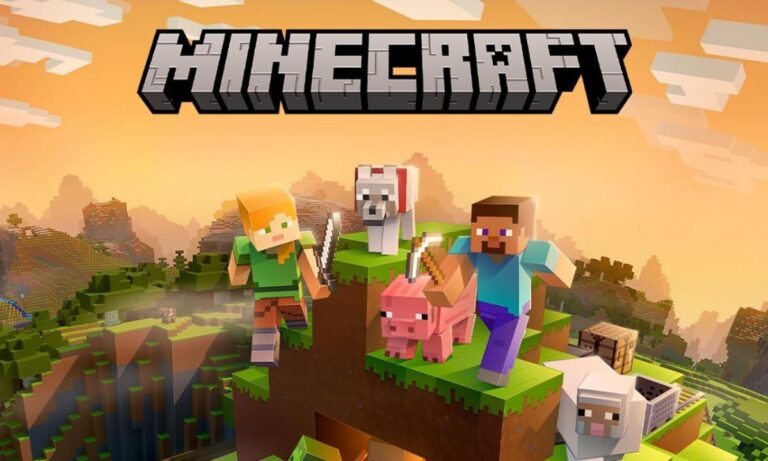Farming is an essential aspect of Minecraft that allows players to sustainably produce food, resources, and materials. Whether you’re a survival enthusiast or enjoy the peaceful nature of farming, this guide will walk you through the process of cultivating crops and animals in Minecraft, ensuring a bountiful harvest and a thriving farm.

Crop Farming
Crop farming involves growing and harvesting various plants for food and resources. Here’s how you can cultivate crops in Minecraft:
- Preparing the Farmland:
- Start by selecting a suitable location for your crop farm. Clear any obstructions and make sure the area receives sufficient sunlight.
- Till the soil by using a hoe on grass or dirt blocks. This turns the blocks into farmland, which is essential for planting crops.
- Hydrate the farmland by placing a water source nearby or using a water bucket on the soil. Moist soil allows crops to grow faster.
- Choosing and Planting Crops:
- Select the crops you want to grow based on your needs and available resources. Common crops include wheat, carrots, potatoes, beetroot, and melons.
- Obtain seeds or saplings for the desired crops. Seeds can be obtained by breaking tall grass or harvesting mature crops. Saplings are obtained by breaking tree leaves or trading with villagers.
- Right-click on the farmland with the seeds or saplings to plant them. Make sure to leave enough space between each plant for them to grow.
- Cultivating and Harvesting:
- Monitor the growth of your crops. Over time, the plants will go through several growth stages, from seedlings to mature plants ready for harvest.
- Ensure the crops receive adequate light and water. If the farmland dries out, use a water bucket to rehydrate it.
- Once the crops reach maturity, right-click on them to harvest the produce. Collect the dropped items and replant the seeds to continue the cycle.
- Expanding and Automating:
- Expand your crop farm by creating additional farmland and planting more crops. This allows you to increase your yield and variety of harvested items.
- Consider automating your farm using redstone mechanisms and hoppers. This can simplify the harvesting process and collect the items automatically.

Animal Farming
Animal farming involves breeding and raising animals for various purposes, such as food, resources, or companionship. Here’s how you can establish an animal farm in Minecraft:
- Enclosures and Pens:
- Start by creating suitable enclosures or pens for your animals. These structures can be as simple as fenced areas or more elaborate constructions.
- Build fences or walls around the area to keep the animals contained. Make sure the enclosure is spacious enough for the animals to move around comfortably.
- Breeding and Reproduction:
- Gather the animals you want to breed. Common farm animals in Minecraft include cows, pigs, chickens, and sheep.
- Feed the animals with their respective breeding items to initiate the breeding process. For example, cows require wheat, pigs require carrots, and chickens require seeds.
- When two animals are fed, they will enter “love mode” and produce a baby animal shortly after. The baby animal will grow into an adult over time.
- Feeding and Nurturing:
- Ensure your animals have access to food to maintain their health and encourage reproduction. For herbivorous animals like cows and sheep, feed them with crops like wheat or hay bales. Carnivorous animals like wolves and cats can be fed with raw meat or fish.
- Provide a water source within the enclosure to keep the animals hydrated.
- Keep the enclosures clean by regularly removing animal waste. This prevents the accumulation of entities, which can cause lag and affect farm performance.
- Resource Gathering:
- Harvest resources from your animal farm. For example, cows provide leather and raw beef, pigs provide porkchops, chickens provide feathers and eggs, and sheep provide wool.
- Use shears to collect wool from sheep without harming them. This allows you to gather different-colored wool for various crafting purposes.

Farming Tips and Tricks
To optimize your farming experience in Minecraft, consider the following tips and tricks:
- Enchantments and Potions:
- Use enchantments like Fortune on your tools to increase the yield when harvesting crops or mining resources.
- Brew potions like Potion of Swiftness or Potion of Strength to enhance your farming efficiency and speed.
- Crop Rotation:
- Implement a crop rotation system to maintain soil fertility. Plant different crops in the same area during different growing seasons to prevent nutrient depletion.
- Villager Trading:
- Interact with villagers to trade crops, animal products, and resources. Villagers offer a variety of valuableitems in exchange for your farm produce, allowing you to acquire rare or useful items.
- Redstone Automation:
- Utilize redstone contraptions and automation systems to streamline your farming operations. This can include automatic crop harvesters, animal feeders, or item sorters to optimize your farm’s productivity.
- Protecting Your Farm:
- Protect your farm from hostile mobs by placing torches or other sources of light to prevent mob spawns.
- Build fences or walls around your farm to keep out unwanted animals or intruders.
- Exploring Farming Villages:
- Explore villages to discover pre-existing farms and farm-related structures. You might find fully grown crops, farm animals, and even helpful villagers who can trade farming-related items.
By following this comprehensive guide, you’ll be able to cultivate crops and raise animals effectively in Minecraft. From establishing thriving crop farms to breeding and nurturing animals, you’ll have a sustainable source of food, resources, and materials for your Minecraft adventures. So grab your hoe, gather your seeds, and embark on a farming journey that will transform your virtual world into a flourishing oasis of agricultural abundance.
